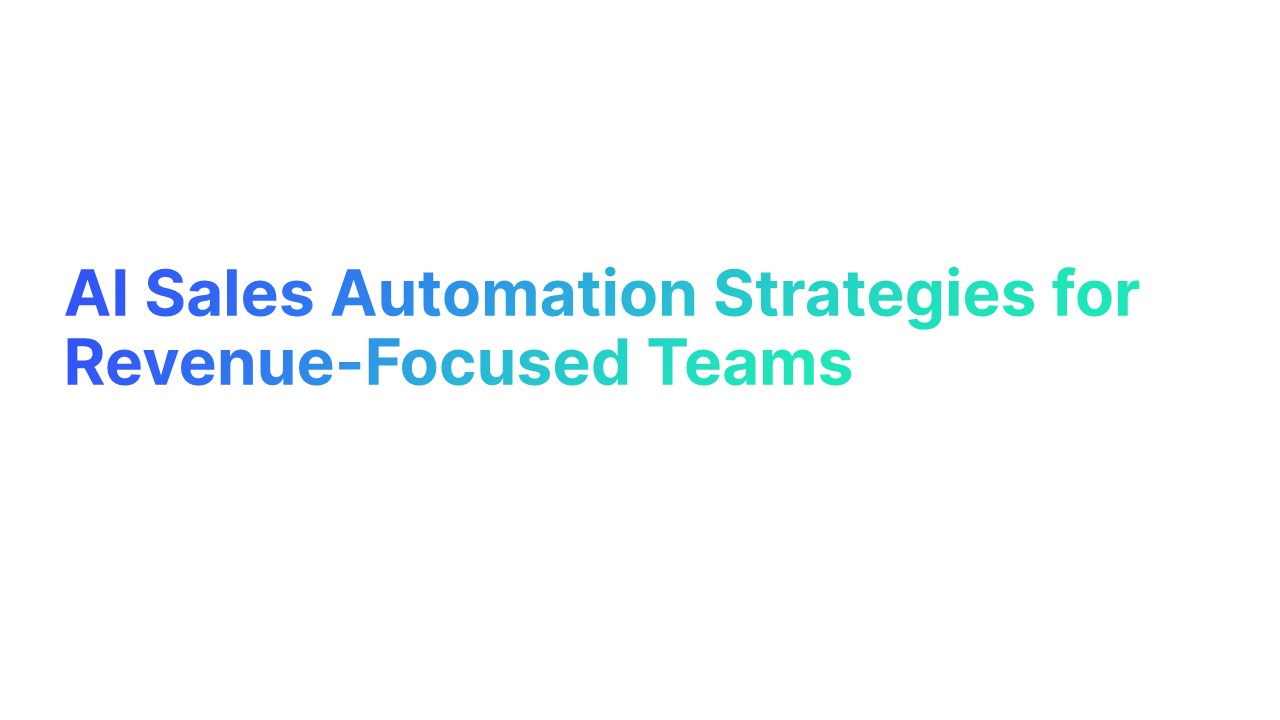Introduction to B2B Email Marketing
Ever walked into a bustling market full of traders, each trying to catch your attention, promising the best deals?
The world of business can feel quite the same. It's competitive and dynamic and demands an effective communication strategy to stand out.
So, how can businesses connect with other businesses effectively?
Many businesses have turned towards email marketing to generate leads, foster business community and partnerships and encourage growth.
They focus on building bridges, not just with immediate clients but also with key industry players, potential collaborators, and other B2B actors.
One of the advantages of this strategy is the ability to make use of effective B2B email marketing tools to establish these connections in a much more streamlined way."
Let's introduce you to the powerhouse of communication - B2B email marketing.
In this section, we'll walk you through the basics of B2B email marketing, why it’s an absolute necessity for businesses, and how it differs from B2C email marketing.
Plus, we'll explore its crucial role in the broader landscape of digital marketing. And, as the cherry on top, we'll show you some fascinating studies highlighting the impact of B2B email marketing on business success.
Understanding B2B Email Marketing
Have you ever been an email marketer and wondered what B2B email marketing is all about?
Let's break it down together.
You see, it's simply using emails to communicate between two businesses.
That's right - it's not just for chatting with friends or sending out holiday newsletters.
In B2B email marketing, we're not talking to consumers through marketing channels but engaging directly with other businesses.
The emails are personalized to people in different business roles - executives, managers, and professionals - addressing their unique needs and pain points.
Imagine sending an email that hits the mark so precisely that it feels like it was written specifically for the recipient. That's the magic of B2B email marketing!
Why is Email Marketing Necessary for B2B?
You may be thinking, "Why email marketing? Can't we just stick to social media marketing?"
Well, my friend, let me share the magic of email marketing with you.
It’s personal, it’s direct, and it allows for a one-on-one conversation.
Imagine having a personal chat with the decision-makers of businesses - that's email marketing for you!
And let's talk about ROI.
Besides, with B2B email marketing, you're not just shooting in the dark. You're targeting your messages to specific businesses that you know could benefit from your products or services.
It's like having a GPS in your marketing campaign that takes you directly to your target destination.
Did you know that for every $1 spent on email marketing, you can expect an average return of $38?
Yes, you read that right - $38! Email marketing isn’t just cost-effective; it’s beneficial!
Plus, with proper email marketing software, you can automate your communication, making the whole sales process much more organized.
It's a tool to keep your potential customers in the loop and lead them through your sales process step by step.
B2B vs B2C Email Marketing
"But isn't email marketing the same for B2B and B2C?"
Not quite. The B2B landscape differs quite a bit from B2C.
You see, in B2B, we often have a longer sales cycle. We're not just persuading someone to buy a t-shirt online; we're working to form a long-term business partnership.
And the decision-making process?
It's less about emotion and more about logic and return on investment.
Your B2B emails need to be rich in information and show how your product or service solves a business problem.
Oh, and remember to keep it professional. Sure, a touch of friendliness won’t hurt, but let’s not forget we're dealing with businesses here.
The Importance of B2B Email Marketing in Digital Marketing
Why is B2B email marketing considered such a big deal in the digital marketing world?
Well, it’s simple.
It's an excellent tool for generating and nurturing sales leads and, ultimately, converting those sales leads, into customers.
But wait, there's more! B2B email marketing lets you establish and nurture long-term relationships with potential clients.
It's like building a bridge that connects your brand with your audience.
Plus, with emails, you can share news about your business to business events, or new products directly with your audience, keeping your brand fresh in their minds.
Isn't that something?
Studies on B2B Email Marketing and Its Impact on Business
And guess what?
This isn’t just talk.
Studies show that 93% of B2B marketers use email to distribute content.
And 40% of them say that email newsletters are critical to their content marketing success.
Just think about this - an automotive industry giant started using personalized emails and saw their click-through rates increase by 14%, and conversion rates by 10%.
Isn't that impressive?
So, B2B email marketing isn't about spamming your potential customers. Instead, it's about understanding their needs, offering solutions, and guiding them through their journey.
The Sender Score in B2B Email Marketing
Let's delve into another critical aspect of B2B email marketing - the sender score. This term may sound new to some, but it plays an instrumental role in your email marketing campaign's success. Your sender score is like a credit rating for your whole email campaign, and it influences whether your emails land in the recipient's inbox or the dreaded spam folder. This score is determined by various factors, including your email send volume, complaint rates, and your list quality. To ensure a high sender score, it's crucial to maintain a healthy list, send relevant content, and be consistent with your email volume. This score reflects your reputation as a sender, and a high score is akin to having a VIP pass that gets your emails directly to your audience's inboxes.
Crafting Your B2B Email Marketing Strategy

We have successfully navigated the waters of B2B email marketing and why it holds such a potent role in our digital marketing world.
Now, let's set sail toward our next destination: Crafting your very own robust B2B email marketing strategy. Ready for it? Let's dive right in!
Why do B2B Emails Require Unique Strategies?
You wouldn't try to hammer a nail with a sponge, would you? Of course not. It's the same principle in marketing. We can't apply a B2C strategy to a B2B context; it's like using a sponge where a hammer is needed!
B2B email marketing, my friend, is more like playing chess. Each move and email must be planned with thought and purpose to make it resonate with your target audience, be it potential new users, customers, or existing ones. That's why B2B emails require unique strategies. These strategies are crafted to cater to longer sales cycles, multiple decision-makers, and the specific pain points not commonly found in B2C markets.
Proven Strategies and Examples for B2B Email Marketing Campaigns
So, you may be wondering, how do we make sure our email and social media marketing campaigns hit the right chord with our target market and audience? Well, I'm glad you asked. Let's explore some proven strategies:
Profile Your Target Customers
Here's our starting point. We need to define our ideal customer profile. What keeps them up at night? What solutions are they searching for? This crucial step helps us create personalized emails that strike a chord with our potential customers, fostering long-term relationships.
Personalization is Key
Ever received an email that feels like it was written just for you?
That's the magic of personalization.
B2B email marketing thrives on personalized emails.
And I'm not just talking about dropping the recipient's name into the subject line or the greeting. It's about crafting content that addresses their unique pain points and needs.
For instance, let's say you're an email marketing software company.
You could segment your audience based on the size of their business or their industry, then create unique email campaigns that address each segment's specific challenges or needs.
Leverage Automation
Automation in email marketing isn't about sending robotic, impersonal messages.
It's about streamlining your email marketing efforts to deliver relevant content to your email subscribers at the right time.
Automated emails, like welcome emails, re-engagement campaigns, or even follow up link back-up emails, can work wonders for your B2B email marketing strategy.
Imagine this: A new subscriber signs up for a free trial of your software.
An automated welcome email is triggered, offering a friendly greeting and highlighting key features.
A few days later, an automated follow up link back-up email checks in on their experience, maybe even offering some valuable educational content to help them get the most out of your software.
Essential Elements of a B2B Email Marketing Strategy
We've looked at some strategies and examples of email marketers. Now, let's zoom out a bit and discuss the elements that form the backbone of a B2B email marketing strategy.
Clear Goals
Are you looking to nurture leads, get new email subscribers, re-engage inactive email subscribers, or showcase a new feature of your product to business community?
Having clear objectives will guide your strategy and help you measure its success.
Segmentation and Targeting
No one wants to feel like another email recipient in a massive list. Segmenting your business customers allows you to tailor your content, making your emails more relevant and engaging.
Call to Action
Each email should have a clear, compelling call to action. Whether you're asking readers to read a blog post, start a free trial, or attend a business-to-business event, your CTA should stand out and inspire action.
How to Define Your Ideal Customer Profile for B2B Email Marketing
Understand Who Your Customers Are
If you're just starting out, your potential customers are the decision-makers in companies that might benefit from your product or service.
Ask yourself, what industries are they in?
What is their role?
What size is their company? Are they local, national, or global?
If you already have customers, take a good look at them. Identify trends and patterns that might help you understand who will most likely benefit from and be interested in your product or service. Look at the businesses you've had the most success with, and ask yourself why they needed your solution. These current customers are a goldmine of information for crafting your ideal customer profile.
Identify Your Customers' Pain Points:
Understanding the challenges your potential clients face is vital for creating an effective B2B email marketing strategy. What problems does your product solve? Why is your service necessary? The more precisely you can answer these questions, the more you can tailor your emails to address these pain points directly.
For instance, if you're offering an email automation tool, your potential customers might struggle with time management or lead generation. Your emails can then highlight how your tool helps automate repetitive tasks, freeing up time for more essential tasks or how your tool can help them generate leads more efficiently.
Create Your Ideal Customer Profiles
Now, with the information you've gathered, it's time to create your ideal customer profiles.
These are detailed descriptions of the businesses that could benefit most from your product or service.
They include industry, company size, job roles, pain points, and more.
Think of this as creating characters for a novel.
Each profile will have different needs, pain points, and motives.
By crafting these profiles, you're setting the stage for personalized and targeted email marketing campaigns that speak directly to these characters' needs.
Refine and Iterate
The last stage is to refine these profiles based on new data and interactions continuously.
Maybe a new industry starts showing interest, or you discover a pain point you hadn't considered. Keep your profiles dynamic and adjust as needed.
Alright, that was quite a lot, wasn't it?
But remember, Rome wasn't built in a day.
It takes time, effort, and lots of learning and adjusting to perfect your B2B email marketing strategy.
But with your ideal customer profiles in hand and a clear understanding of your strategy, you're well on your way.
So, as we wind up this crucial section on defining your ideal customer profile for B2B email marketing, you might find yourself craving even more knowledge.
There's an in-depth article titled "The Art of Email: A Comprehensive Exploration of How Writing Emails Matters" on the Alore blog.
It digs deep into the nuances of email writing and its undeniable impact on your marketing outcomes.
Check it out at www.alore.io/blog/the-art-of-email-a-comprehensive-exploration-of-how-writing-emails-matters for a rich trove of insights and tips.
Implementing B2B Email Marketing Campaigns

Now, we've come to the practical part of our journey, the action! In the arena of B2B email marketing, merely knowing the theory doesn't cut the mustard. It's time to put that theory to the test with implementation. So, let's get down to business!
Segmentation in B2B Email Marketing Campaigns
Think of segmentation as organizing your potential customers into neat little groups, but not just any groups.
They're formed based on factors like industry, company size, and the role of the person you have business to business events you're reaching out to within their organization.
Why, you ask?
Imagine trying to sell winter clothing to someone living in a tropical climate or offering a luxury cruise package to a college student.
Sounds absurd, right?
That's where segmentation comes in.
It allows you to tailor your emails to fit your audience's specific needs and interests, making your email marketing efforts more efficient and impactful.
For a successful B2B email marketing strategy, start by segmenting your business customers into different categories.
This segmentation could be based on their industry (for instance, the automotive industry versus the software industry), the size of their company (SMBs versus large corporations), or their role in the decision-making process (executives versus managers).
Personalizing Your B2B Email Marketing Campaigns
Personalization is the key to winning hearts in email marketing. It's not just about addressing the recipient by their name (though that certainly helps); it's about truly understanding their needs and crafting a message that resonates with them. Here are some ways you can personalize your B2B emails for winning results:
- Industry-Specific Content: You can create industry-specific content that speaks directly to the unique challenges and opportunities of the recipient's industry.
- Role-Specific Benefits: Highlight the benefits of your product or service that would appeal to the recipient's role in their organization. For example, a CTO might be interested in the technical aspects, while a CEO might be more interested in the ROI.
- Company-Specific Insights: Use data and insights about the recipient's company to create a highly personalized message. This could include referencing recent company news or showing how your product or service can help with their specific goals or challenges.
- Behavioral Triggers: Send emails based on the recipient's behavior. For example, if they downloaded a whitepaper from your website, you could follow up with an email that provides additional, related content.
Personalization can lead to winning results because it shows the recipient that you understand them. It makes them feel valued and appreciated, which can lead to higher engagement and response rates.
Incorporating Video in B2B Email Marketing
Did you know that incorporating video in your email marketing campaigns can increase click-through rates by up to 300%?
It's true!
The power of video is immense.
Video provides an engaging way to convey complex information succinctly and entertainingly.
Don't let the thought of video production scare you. It doesn't have to be a Hollywood-level production.
It could be as simple as a product walkthrough, a satisfied customer testimonial, or a CEO's quick message.
The key is ensuring it's relevant and adds value to the recipient.
Email Marketing Campaign Performance Metrics

Measuring the success of your B2B email marketing campaign involves tracking various Key Performance Indicators (KPIs). Each KPI can provide insights into a different aspect of marketing performance metric for your email campaign alone, helping you understand where you're excelling and where there's room for improvement. Here are some essential KPIs to track and why they matter:
- Open Rate: This shows the percentage of recipients who opened your email. It can help gauge the effectiveness of your subject lines.
- Click-Through Rate (CTR): This indicates the percentage of recipients who clicked on a link within your email. A high CTR is usually a good sign that your email content is resonating with your audience.
- Bounce Rate refers to the percentage of emails that weren't successfully delivered to the recipient's inbox. A high bounce rate could indicate issues with your email list or delivery practices.
- Conversion Rate: This is the percentage of recipients who completed the desired action, such as purchasing or signing up for a webinar. This KPI is crucial for understanding how many people are moving further down your marketing funnel.
- Unsubscribe Rate: This shows the percentage of recipients who opted out of receiving future emails from you. If your unsubscribe rate is high, it could indicate that your content isn't meeting your audience's expectations.
By closely monitoring these KPIs, you can comprehensively understand your B2B email marketing campaign's performance and make data-driven decisions to improve your future email campaigns further.
19 B2B Email Marketing Examples and Templates
Let's dive into the world of effective B2B email marketing with 19 examples and templates. We'll go over each example, describe the template, and explain why it works.
The Welcome Email

Template:
Subject Line: Welcome to [Your Company Name]!
Hi [Name],
We're thrilled to have you with us! Here at [Your Company Name], we're committed to providing you with [briefly explain what your company does].
If you have any questions or need any support, don't hesitate to get in touch with us.
Welcome aboard, [Name]!
Best,
[Your Name]
Why it works?
The welcome email is the first touchpoint for your new contact.
It sets the tone for your future communication, making it important to be friendly and engaging. This template is straightforward, welcoming, and encourages further communication.
The Personal Check-In Email
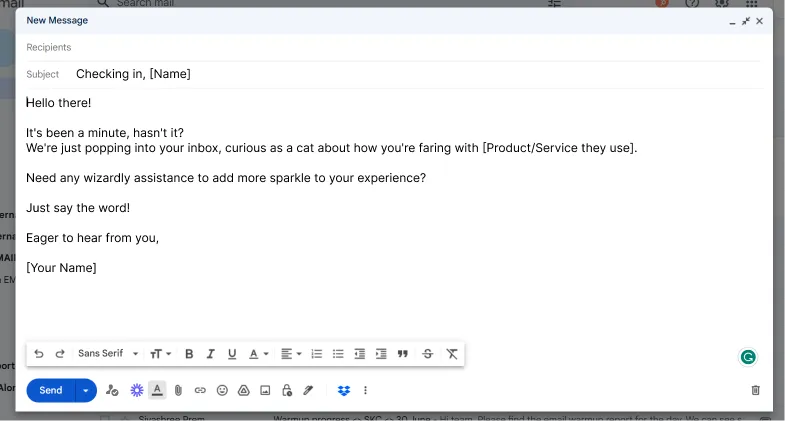
Template:
Subject Line: Checking in, [Name]
Hi [Name],
It's been a while since we last caught up. We just wanted to check in and see how things are going with [Product/Service they use].
Is there anything you need from our end to enhance your experience?
Looking forward to hearing from you,
[Your Name]
Why it works?
This first email campaign aims to rekindle communication with clients or customers who have been inactive for some time. The casual and personalized email tone makes the customer feel valued and cared for.
The Announcement Email
![Exciting News from [Your Company Name]](https://cdn.prod.website-files.com/645258dee17c72222bca47d8/64ce41ddb81dfcf6c96ca0af_58885112-c099-4537-92fd-4e07a9f28e45.webp)
Template:
Subject Line: Exciting News from [Your Company Name]
Hi [Name],
We have some exciting news to share! [Briefly describe the announcement]
We hope you are as thrilled about this update as we are. We're always here if you have any questions or if you'd like to learn more.
Best,
[Your Name]
Why it works?
Announcement emails are a great way to keep other members of your audience informed about new products, features, or updates in your company.
The tone is enthusiastic, engaging, and promotes conversation.
The Post-Purchase Email
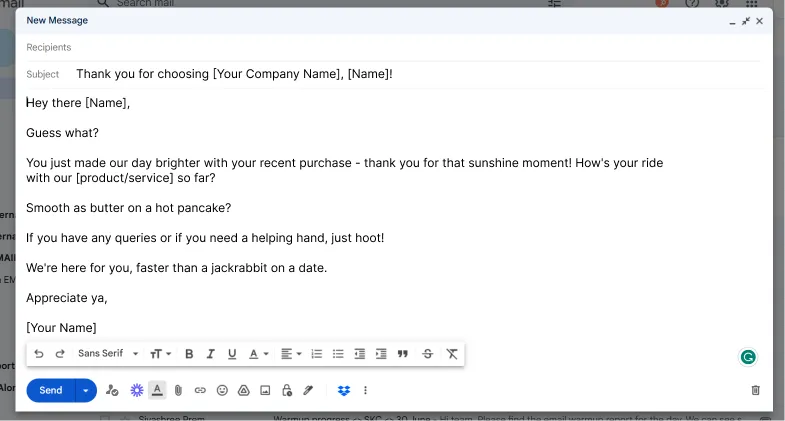
Template:
Subject Line: Thank you for choosing [Your Company Name], [Name]!
Hi [Name],
We noticed that you recently made a purchase from us. We wanted to take a moment to express our appreciation for your trust and to ensure that everything is going smoothly with your new [product/service].
If you need any help or have any questions, feel free to get in touch with us. We're here for you!
Thanks again,
[Your Name]
Why it works?
A post-purchase email shows gratitude to the customer for their purchase and opens a channel of communication for any potential questions or issues. This strengthens the customer relationship and promotes customer satisfaction and loyalty.
The Content Promotion Email
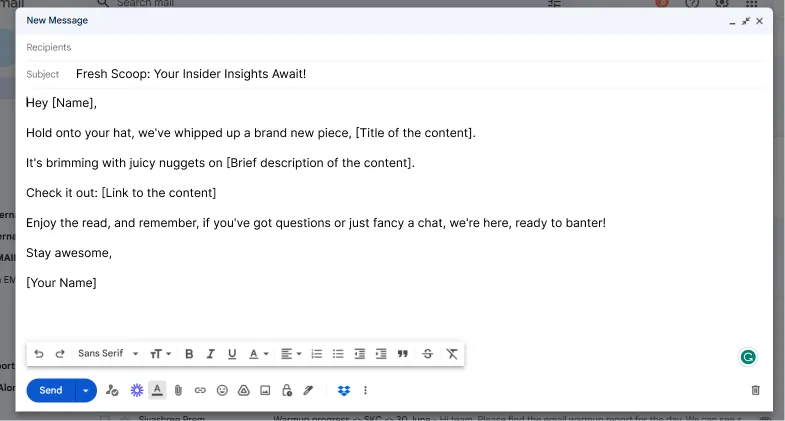
Template:
Subject Line: New Insightful Content for You, [Name]
Hi [Name],
We thought you might be interested in our latest piece, [Title of the content]. It provides valuable insights on [Brief description of the content].
[Link to the content]
We hope you find this helpful. As always, we're here if you have any questions.
Best, [Your Name]
Why it works?
A first content marketing promotion email is used to share valuable content with your audience, helping to establish your brand as a thought leader in the industry. The conversational tone ensures the message feels personalized and engaging.
The Renewal Reminder Email
![Heads Up! Your [Service Name] Adventure Continues Soon!](https://cdn.prod.website-files.com/645258dee17c72222bca47d8/64ce41dd9e1879e4a84c0cb3_6703b250-4123-4ee5-b5ee-636482d9db51.webp)
Template:
Subject Line: Don’t Miss Out! Your [Service Name] Renewal is Coming Up
Hi [Name],
Just a quick reminder that your [Service Name] subscription is due for renewal on [Renewal Date]. We wouldn’t want you to miss out on all the great features you’ve been enjoying.
Click here to renew [Link to renewal page]
If you have any questions or need assistance, don’t hesitate to contact us.
Cheers,
[Your Name]
Why it works?
This B2B email template is designed to help retain your clients by reminding them of their upcoming renewal dates. By providing them with a quick and easy way to renew, you're facilitating a frictionless customer experience.
The Webinar Invitation Email
![Heads Up! Your [Service Name] Adventure Continues Soon!](https://cdn.prod.website-files.com/645258dee17c72222bca47d8/64ce41de8633ce9ba85b1ea2_40e0ea57-1d7f-4a79-8cc5-c674cbe146b7.webp)
Template:
Subject Line: Join Our Upcoming Webinar on [Webinar Topic]
Hi [Name],
We’re hosting a webinar on [Webinar Topic] and think you might find it interesting. Our expert, [Speaker's Name], will share valuable insights and answer your questions live.
Date: [Webinar Date] Time: [Webinar Time]
Register here: [Link to registration page]
Hope to see you there,
[Your Name]
Why it works?
Webinar invitation emails help to promote your events and engage with your audience on a more personal level. Making it a live event with Q&A interaction boosts the value proposition and encourages more attendees.
The Event Follow-Up Email
![You Rocked [Event Name]! Here's a Thank You Note 🎸](https://cdn.prod.website-files.com/645258dee17c72222bca47d8/64ce41def05e28519a666f42_8a1d4d87-6390-4285-b2fb-32a4be285ee4.webp)
Template:
Subject Line: Thank you for joining our [Event Name]
Hi [Name],
We just wanted to reach out and say a big thank you for taking the time to attend [Event Name].
For those who missed a session or want to rewatch one, here’s a link to the recordings: [Link]
If you have any questions or would like to discuss anything further, please feel free to get in touch.
Best,
[Your Name]
Why it works?
This template can be used to thank attendees for their presence, provide extra value in the back opt in form of event recordings, and open a channel for further communication. It's a great way to increase brand loyalty.
The Testimonial Request Email

Template:
Subject Line: We value your opinion
Hi [Name],
As an informed member and a valued customer, your feedback is incredibly important to us.
Would you mind taking a moment to provide a testimonial about your experience with [Your Product/Service]?
If you agree, we can set up a quick call, or you can write it down, whatever is more convenient for you.
Looking forward to hearing from you,
[Your Name]
Why it works?
Testimonials add credibility to your brand. This template asks for a testimonial in a polite, respectful manner that puts the customer's convenience first.
The Product Update Email
![Buckle Up! [Product Name] Just Got a Turbo Boost! 🚀](https://cdn.prod.website-files.com/645258dee17c72222bca47d8/64ce41de5b7acb28ac23d27e_c8d9c067-abba-4121-9b0b-acbcb5f70efb.webp)
Template:
[Subject line: Exciting news – we’ve made [Product Name] even better!
Hi [Name],
We're thrilled to announce that we've made some significant updates to [Product Name] that we think you'll love. Here’s what’s new: [Include a list of updates]
If you have any questions or need help with the updates, please reach out.
We’re here to help.
Cheers, [Your Name]
Explanation: This template communicates updates to your customers. It also reassures them that help is available, promoting a customer-centric approach.
The Re-engagement Email
![[Name], Your Fan Club Misses You! 😢](https://cdn.prod.website-files.com/645258dee17c72222bca47d8/64ce41dec830bc145bdf5896_01b22856-7c1f-479d-b4e2-7aea187463be.webp)
Template:
Subject Line: We miss you!
Hi [Name],
We've noticed you haven't been around in a while, and we miss you! We've made a lot of exciting updates and additions that we think you'll love. [Briefly describe updates]
If there's anything we can assist you with or any feedback you'd like to share, please don't hesitate to let us know. We're here to help.
All the best,
[Your Name]
Why it works?
This email aims to reconnect with customers who haven't engaged with your brand recently. It's friendly, highlights updates, and offers assistance to address possible reasons for their absence.
The Holiday Offer Email
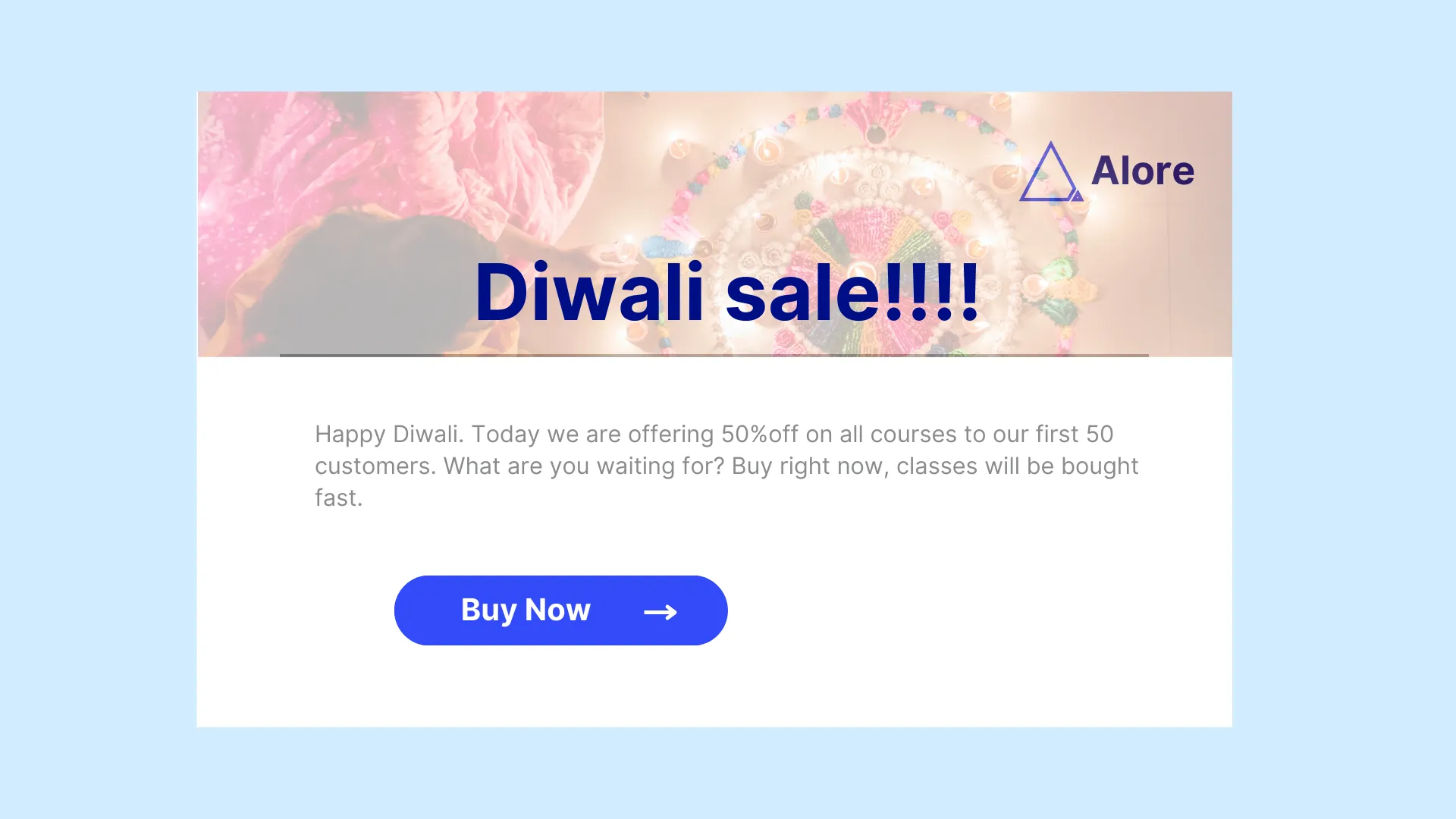
Template:
(Subject line: Our gift to you this [holiday] – special offers inside!
Hi [Name],
To celebrate [holiday], we're offering our loyal customers like you a special discount! Use code [DISCOUNT CODE] at checkout to save [discount amount].
Hurry – this offer won't last long!
Happy [holiday],
[Your Name]
Why it works?
This festive email promotes a holiday offer, creating a sense of exclusivity and urgency to encourage immediate action.
The Account Activation Email
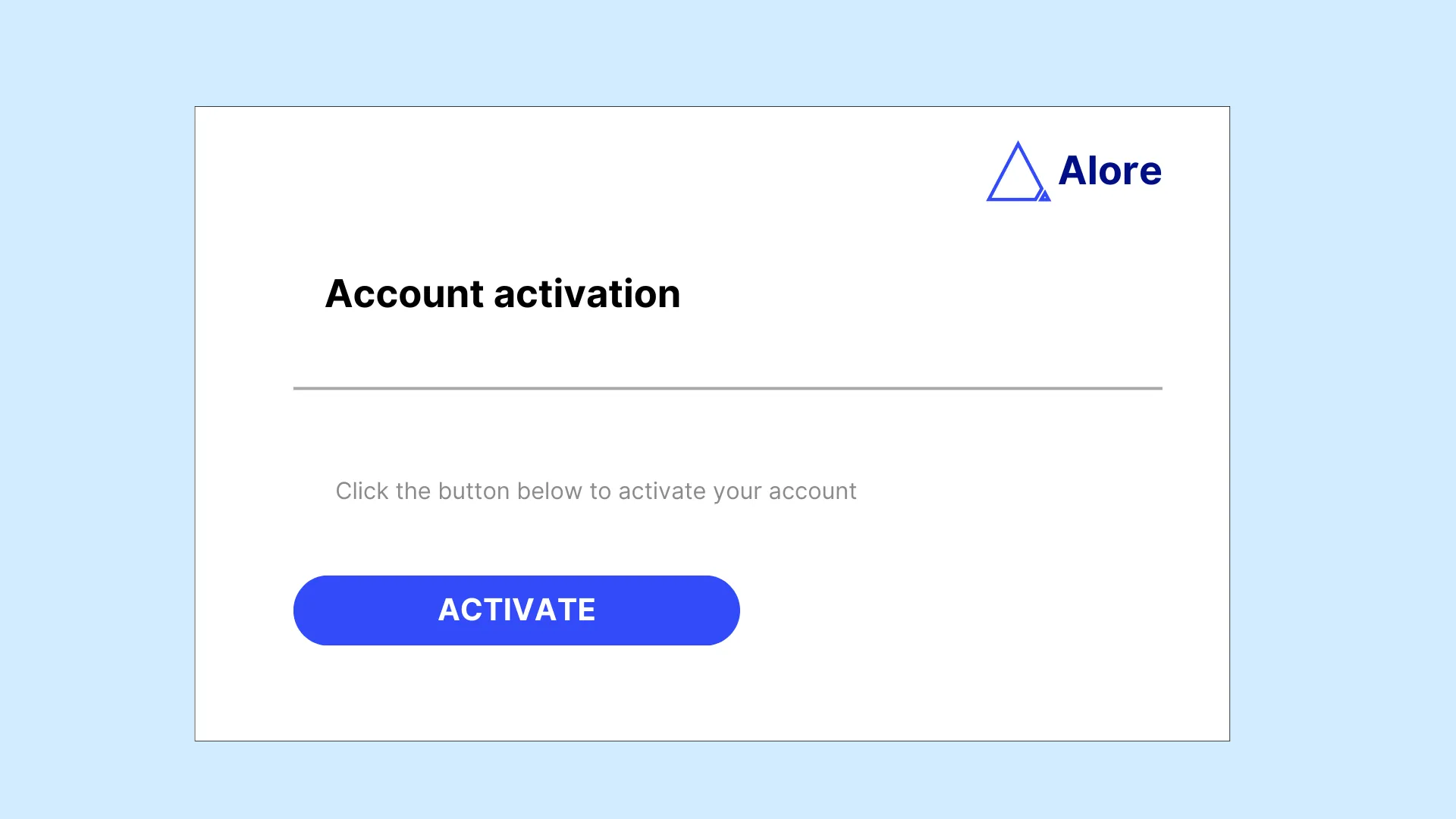
Template:
Subject Line: Welcome to [Your Brand] – Activate your account now
Hi [Name],
Thank you for signing up for [Product/Service]. To activate your account and start benefiting from [Product/Service], please click the link below:
[Activation Link]
If you have any questions, please feel free to contact us.
Best,
[Your Name]
Why it works?
This automated email also guides new trial users through through the account activation process and offers help if needed, providing a smooth onboarding experience for trial users.
The Content Sharing Email

Template:
Subject Line: [Name], you might find this interesting!
Hi [Name],
Knowing your interest in [industry/topic], we thought you might enjoy our latest blog post:
[Link to Blog Post]
We'd love to hear your thoughts!
Best,
[Your Name]
Why it works?
This template is for sharing relevant content with your audience. It adds value and invites interaction, fostering engagement and thought leadership.
The Invitation to an Event or pre event email newsletters
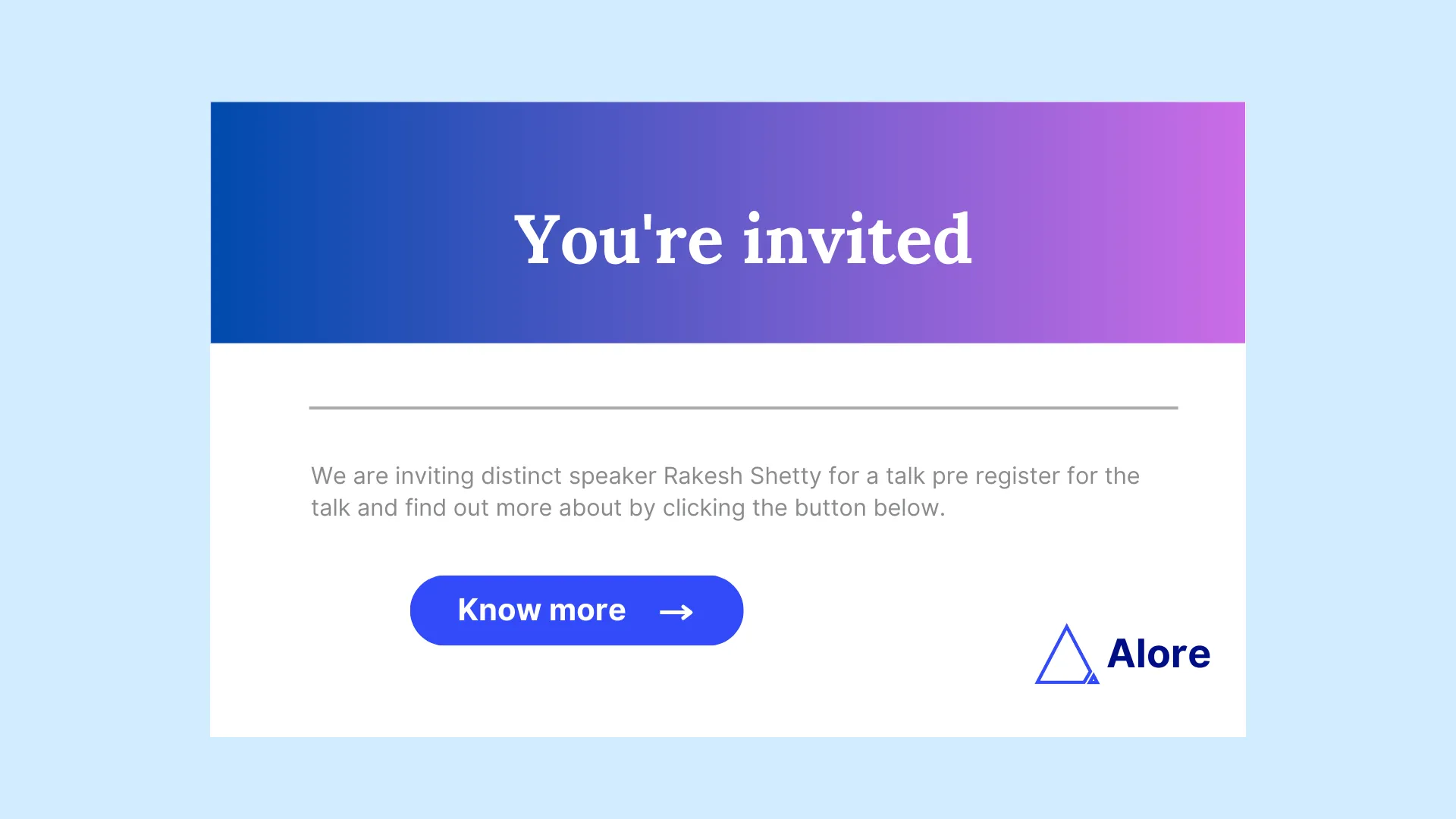
Template:
Subject Line: [Name], join us for our exclusive [webinar/event]!
Hi [Name],
We are excited to invite you to our upcoming [webinar/event] on [date] at [time]. This [webinar/event] will be discussing [topic] and will feature industry leaders as speakers.
Register here: [Link to Registration]
We hope to see you there!
Best,
[Your Name]
Why it works?
This announcement email is a formal invitation to a webinar or event. The template of announcement email highlights the value of the event, which encourages attendance.
The Networking Email
Template:
Subject Line: Let's connect, [Name]!
Hi [Name],
I've admired your work in [industry] and would love to connect and discuss potential ways we could collaborate or support each other's business goals.
Are you available for a [call/meeting] on [suggest 2-3 dates and times]?
Looking forward to your response,
[Your Name]
Why it works?
This email template facilitates networking by expressing admiration for the recipient’s work and suggesting a meeting for potential collaboration.
The Upsell Email
Template:
Subject Line: [Name], get more with [upsell product]!
Hi [Name],
Since you've been using [current product], we thought you might be interested in [upsell product]. It comes with [list of additional features and benefits].
For more details, click here: [link to upsell product]
Best,
[Your Name]
Why it works?
This first email campaign aims to upsell by highlighting the added benefits of the more premium product, targeting new users, or even new subscribers or users of a lower-tier product.
The Training/Workshop Invite Email
Template:
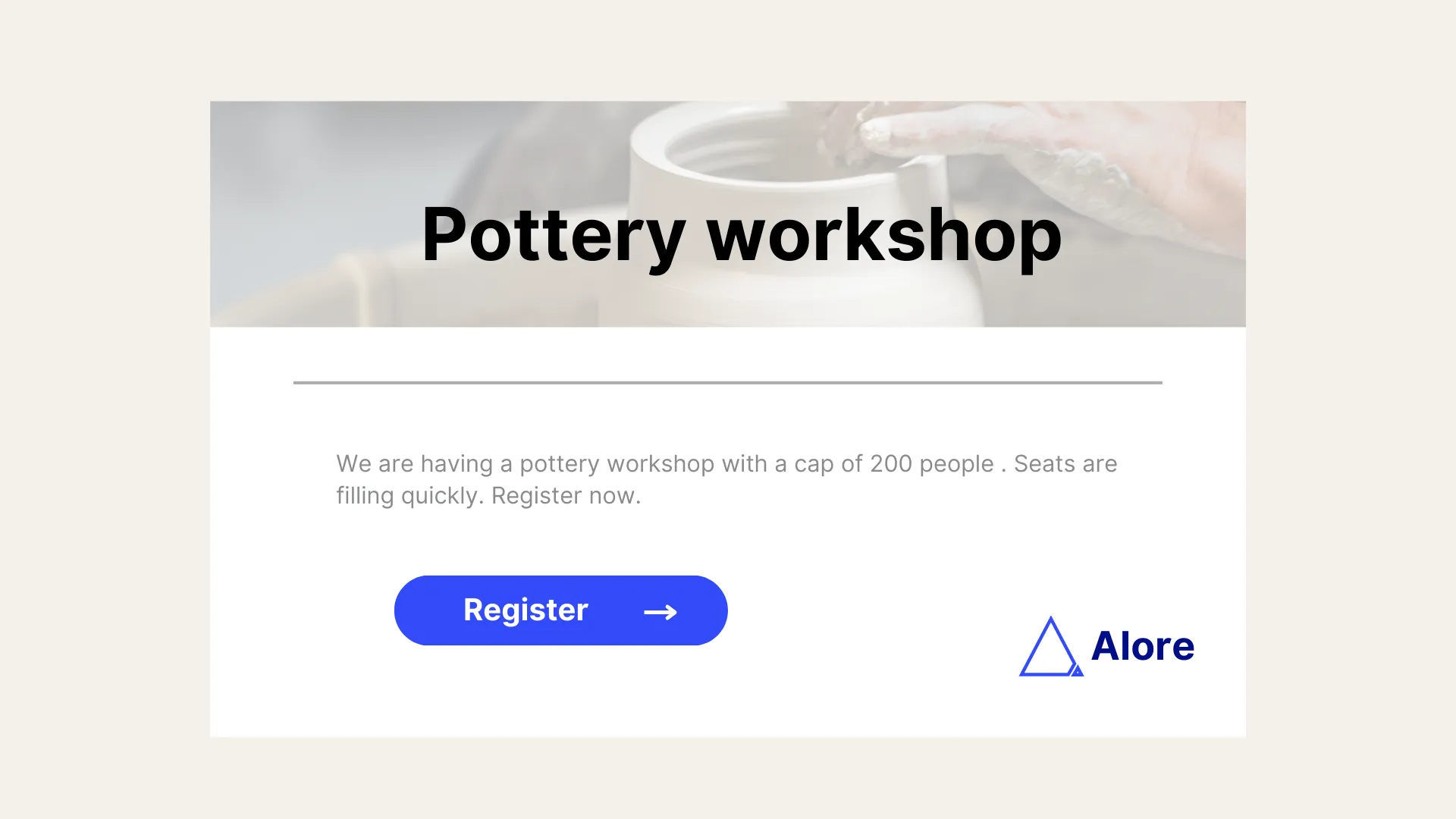
Subject Line: Exclusive Workshop Invite Just for You, [Name]!
Hi [Name],
We've noticed how you've effectively used our [product/service]. To help you maximize its benefits, we invite you to an exclusive workshop/webinar on [date and time].
This session will cover: [list of topics to be covered]
To secure your spot, register here: [registration link]
See you there!
[Your Name]
Why it works?
This email is sent to existing users of your product/service to invite them to participate in a workshop or webinar. It demonstrates that you're invested in their success and provides an opportunity to deepen engagement.
The Cross-Sell Email
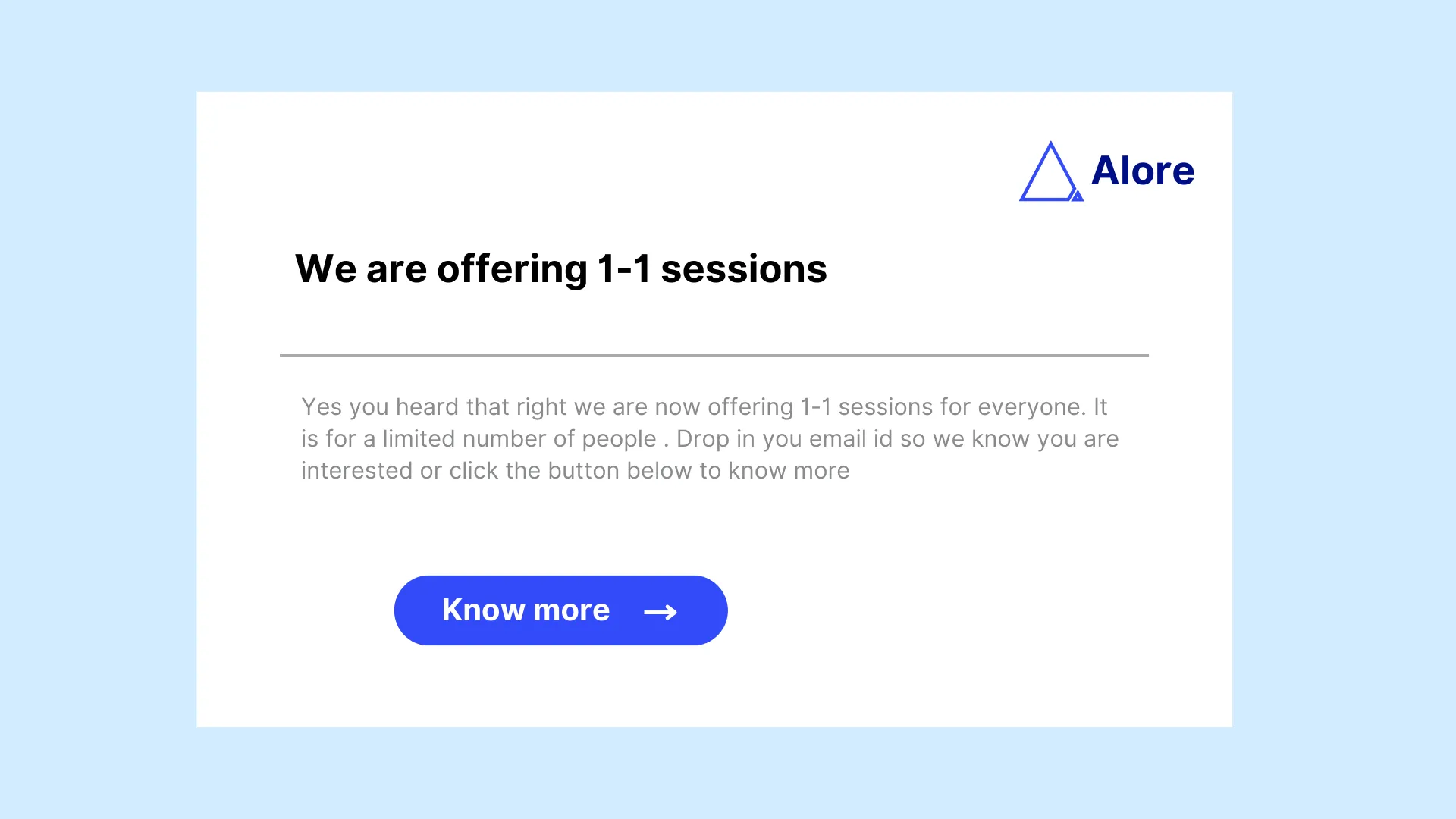
Template:
Subject Line: [Name], have you checked out our [related product/service]?
Hi [Name],
As a loyal user of [current product/service], we thought you might also be interested in our [related product/service]. Here's how it can help you: [list benefits/features]
Want to know more? Here's the link to check it out: [link to related product/service]
Let us know if you have any questions!
Best,
[Your Name]
Explanation: This email is used to introduce customers to other products/services that your company offers. By highlighting how this other product/service can provide added value, you create opportunities for increased revenue and customer engagement.
Advanced B2B Email Marketing Techniques
By now, you've learned about crafting a B2B email marketing strategy, implementing it, and have even seen a variety of example templates.
With these foundations in place, it's time to take a step further. Ready for a deep dive into some more sophisticated tactics?
In this section, aptly titled 'Advanced B2B Email Marketing Techniques,' we're going to expose you to four potent strategies that can significantly amplify your email marketing efforts.
From strategically placing your call to action (CTA), adding urgency to your emails, and using brand partnerships to boost your email list, to drumming up excitement with anticipation emails, each of these techniques will act as a force multiplier for your email marketing campaign.
Remember, there's no one-size-fits-all approach here.
The beauty of email marketing lies in the ability to tweak, optimize, and personalize.
It's all about finding what works best for your specific audience. So without further ado, let's jump into these advanced techniques!
Strategically Placing Your Call to Action

So you've composed a compelling B2B email, loaded with interesting content and stunning visuals.
But wait, where's the call to action (CTA)?
You don't want your audience to lose sight of what they need to do next, right?
The position of your CTA can significantly impact its effectiveness, which is why strategic placement is essential.
Let's discuss why it matters and some proven strategies to place your CTA.
The goal is to place your CTA in an area that's easy to spot, but doesn't interrupt the flow of your email.
One common approach is the "Above the Fold" strategy, where your CTA is located in the top half of your email, ensuring that the recipient doesn't need to scroll down to find it.
Imagine you're crafting a B2B email marketing example promoting your latest eBook.
You might start your email with an engaging introduction, then include a CTA link saying, "Download Your Free eBook Now!" right at the end of the first paragraph.
This way, your audience immediately knows what action to take.
Remember, CTAs aren't limited to the body of your email. Experiment with placing them in your email headers, footers, or even P.S. and subject lines to see what works best for your audience.
Adding Urgency to Your Emails
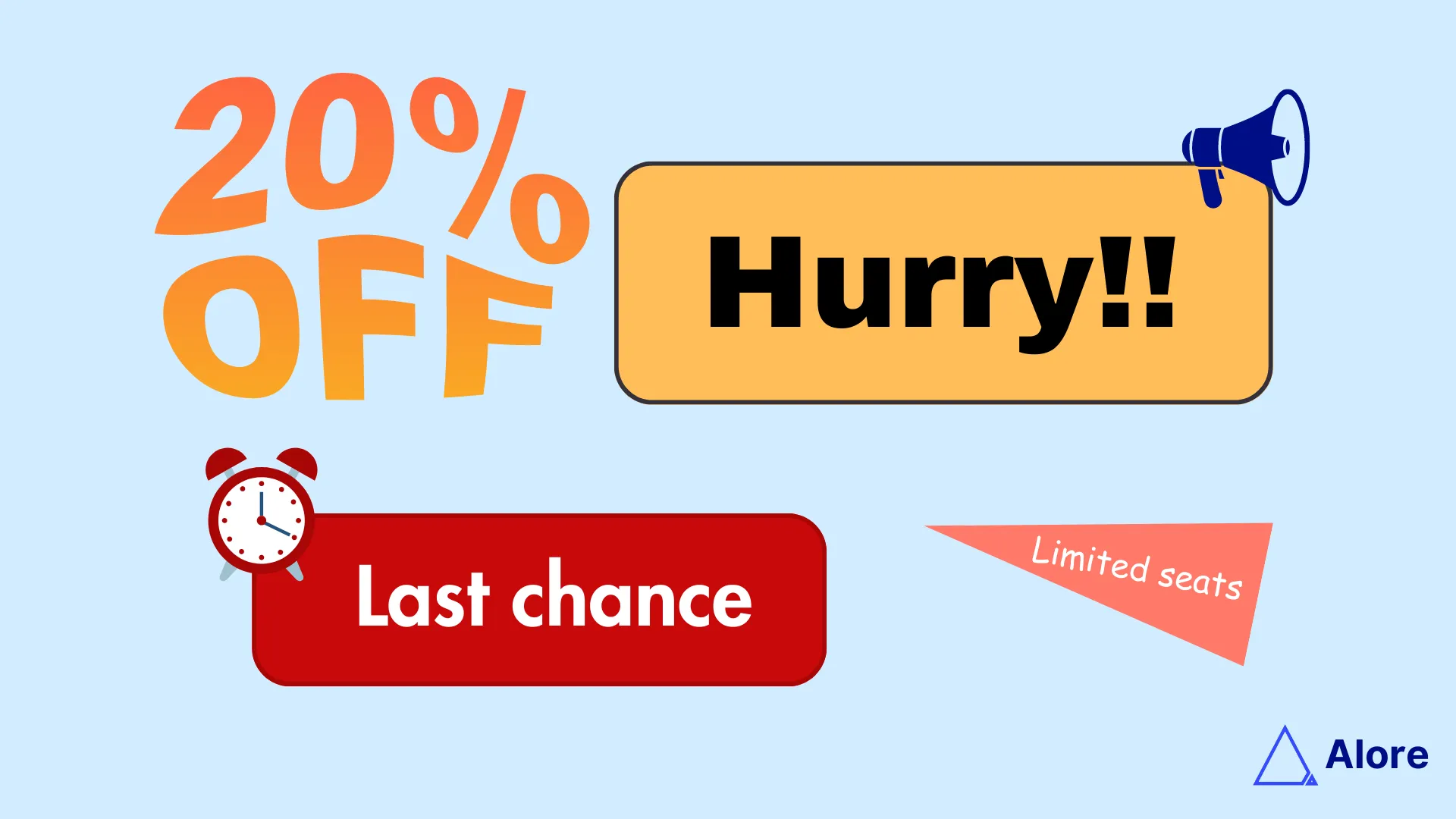
Adding a sense of urgency to your B2B emails can trigger an immediate response from your readers.
That's because urgency taps into our innate fear of missing out (FOMO). But how do you add urgency to your emails without sounding pushy?
One way is to use time-limited offers. For example, "Sign up in the next 48 hours for a 20% discount!" Another strategy is to limit availability, such as "Only 10 spots left in our exclusive webinar!"
These techniques prompt readers to act quickly before the opportunity slips away.
In any B2B email marketing example that adds urgency, it's crucial to be honest and genuine. If you frequently send "last chance" emails, your audience might begin to question their authenticity, which can harm your credibility.
Partnering with Another Brand to Grow Your Email List
Let's talk about partnerships. Partnering with another brand can be a fantastic way to grow your email list. It's a win-win situation where both brands gain exposure to a new audience.
Picture this: your company provides B2B marketing services, and you partner with a brand that offers marketing software. You could host a co-branded webinar, offering valuable insights on utilizing marketing tools effectively. Attendees would sign up for the webinar using their email addresses, growing both your and your partner's email lists.
It's most important marketing channels is to choose a partner whose services or products complement yours. You want to ensure their audience finds value in what you offer and vice versa.
Generating Excitement with Anticipation Emails
The final advanced technique we'll explore today is creating anticipation with your B2B emails.
Ever wondered why movie trailers are so exciting?
They tease the audience with compelling scenes, prompting viewers to await the movie's release eagerly. You can apply this concept to your B2B emails too!
Whether you're about to launch a new product, host an event, or release a new piece of content, an anticipation email can drum up excitement among your audience.
Start by giving them a sneak peek into what's coming, then encourage them to stay tuned for the big reveal.
An anticipation email for a new software update might read, "We've been working on some exciting new features that we think you'll love. Keep an eye on your inbox for the big reveal!"
These advanced B2B email marketing techniques can take your email campaigns to the next level. Remember, the ultimate goal is to build a lasting relationship with your audience, providing them with valuable content that helps them succeed.
Engaging Existing Customers with B2B Email Marketing

In the business world, it's often said that retaining existing customers is just as important, if not more so, than acquiring new ones.
B2B email marketing plays a significant role in this endeavor, effectively nurturing and engaging your existing customer base.
This section, "Engaging Existing Customers with B2B Email Marketing," will provide you with practical, actionable strategies for keeping your current customers involved and engaged through b2b email marketing examples.
Understanding Customer Lifecycle in B2B Email Marketing
A customer's journey with your business is never a straight line. From the moment they first hear about you to when they become repeat customers, their relationship with you changes and evolves. This customer journey itself, referred to as the customer lifecycle, can be broken down into different stages—awareness, consideration, purchase, retention, and advocacy.
In B2B email marketing, understanding the customer lifecycle is crucial as it helps you tailor your messaging to meet customers' needs at each stage. For example, a customer at the awareness stage might appreciate educational content about your industry, while one at the retention stage would find more value in personalized product recommendations or loyalty rewards.
By aligning your own email campaigns and marketing efforts with the customer lifecycle, you can deliver the right message at the right time, enhancing engagement and loyalty among your existing customers.
Customer Segmentation for Personalized Communication
The key to engaging your existing customers through B2B email marketing lies in personalization. The first step toward this is customer segmentation, the process of dividing your customer base into groups or segments based on common characteristics.
These characteristics could include industry, company size, past sales cycle, purchase behavior, engagement with previous emails, and more. By segmenting your customers, you can tailor your email content to address their unique needs and interests, increasing the likelihood of engagement.
For instance, a segment of customers who frequently open your product update emails might appreciate a sneak peek into upcoming releases. In contrast, a segment that engages more with tutorial content might benefit from an in-depth webinar or guide.
The Role of Content in Customer Engagement
Quality content is at the heart of effective B2B email marketing.
But what constitutes 'quality' can greatly vary depending on your own target market and audience.
When engaging existing and new customers together, your content needs to add value, either by addressing a pain point, offering a solution, or providing relevant industry insights.
Your content can take various forms—blogs, whitepapers, case studies, webinars, video tutorials, product updates, and more.
Consider using a mix of these in your emails to cater to different preferences within your customer base. Also, don't shy away from experimenting and measuring which content types yield the highest engagement.
Automation for Consistent Engagement
Automation is a powerful tool for consistent engagement in B2B email marketing.
With automation, you can schedule a series of emails to be sent out based on specific triggers or time intervals.
This ensures your existing and new customers to receive regular communication from you, keeping your brand top of mind.
Despite the automated nature of these emails, it's crucial to retain a sense of personalization.
Dynamic content, which changes based on the recipient's attributes, can help achieve this.
For example, a customer who recently purchased your product might receive automated emails offering support resources or tips for getting the most out of their purchase.
Measuring and Optimizing Your Customer Engagement Efforts
As with any other marketing plan or initiative, it's important to measure the success of your B2B email marketing campaigns. This not only helps prove ROI but also provides insights that you can use to optimize your efforts.
Key metrics to consider include open rate, click-through rate, conversion rate, and email sharing/forwarding rate. Additionally, keep an eye on the unsubscribe rate—it could indicate that your emails aren't resonating with your customers.
Remember, optimization is an ongoing process. Continually testing and tweaking your emails based on these metrics is key to maintaining and enhancing engagement among your existing customers.
10 B2B Email Marketing Best Practices for Optimal Customer Engagement

A successful B2B email marketing campaign doesn’t happen by chance.
It requires a carefully crafted strategy that aligns with your overall business goals.
To help you create that winning strategy, here are ten best practices for optimal customer engagement most important marketing channels.
Prioritize Permission-Based Email Marketing
First and foremost, ensure your email marketing campaigns are permission-based.
This means only sending emails to people who have willingly provided their email addresses and agreed to receive communications from you.
This practice not only respects your recipients' preferences, but it also helps avoid spam filters and maintains your brand's reputation.
Segment Your Email Lists
Segmentation allows you to create highly targeted emails that cater to the specific needs and interests of different customer groups. Segment your list as per your target audience.
By segmenting your email lists based on factors like demographics, past purchases, or engagement levels, you can improve your email relevancy and boost engagement rates.
Personalize Your Emails
Personalization goes beyond addressing the recipient by their name.
It includes tailoring the content of the email to match the recipient's preferences, behaviors, or past interactions with your brand.
You can significantly increase engagement by making your emails more relevant to each recipient.
Create Valuable Content
Your email content should offer value to the recipient.
Whether it’s industry insights, exclusive discounts, or helpful resources, make sure each email you send provides something of interest or benefit to the recipient.
Valuable content helps build trust with your audience and encourages them to engage with your emails.
Use Clear and Compelling CTAs
A clear and compelling call-to-action (CTA) guides your recipients on what steps to take after reading your email.
Whether it's visiting your website, downloading a resource, or making a purchase, your CTA should be visually prominent and use persuasive language.
Test and Optimize Your Emails
A/B testing is a powerful tool in B2B email marketing. By testing elements like your subject line, email design, content, and CTA, you can identify what resonates best with your audience and optimize your emails for better performance.
But here's the kicker: A/B testing isn't about making random changes. It's a calculated process requiring a solid strategy for accurate results. You might be wondering, "Where do I start?" Well, we've got you covered. For a detailed A/B testing strategy, check out our blog post "The Right A/B Testing Strategy for Email Success". This guide will provide you with the foundation you need to kickstart your A/B testing journey, ensuring your B2B email marketing hits the bullseye every time.
Optimization is an ongoing process, so keep testing and refining to enhance your email engagement rates continually.
Leverage Automation
Email automation can help you deliver the right message at the right time.
For instance, you can set up automated emails to onboard new subscribers, follow up on purchases, or nurture leads.
Automation not only enhances efficiency but also ensures consistent communication with your customers.
Monitor and Adjust Based on Metrics
Always keep an eye on your email marketing metrics.
Open, click-through, conversion, and unsubscribe rates provide valuable insights into your campaign performance. Monitor these metrics and adjust your strategy as needed to improve your results.
Respect and Maintain Email Frequency
Striking a balance in your email frequency is crucial to avoid overwhelming or, worse, annoying your recipients.
It's essential to respect your new subscribers'' inboxes and maintain a frequency that keeps you on their radar without being intrusive.
Keep Your Email List Clean
Maintaining a clean email list means regularly removing unengaged and inactive subscribers, correcting typos in email addresses, and handling bounce-back emails effectively.
A clean email list helps improve your deliverability rates and overall email marketing performance metric.
In conclusion, implementing these business to business email marketing best practices can help you engage your customers more effectively and drive optimal results from your email campaigns too.
Remember, this customer journey of satisfaction and engagement is not a one-time event, but a continuous process of delivering value and building relationships.
Concluding Thoughts on B2B Email Marketing and its Role in Lead Generation

The Evergreen Power of Email Marketing
Despite the plethora of new digital marketing strategies emerging each year, the power of email marketing remains unscathed. Why, you ask? It's simple. Email marketing's potential for personalization, its direct nature, and the ability to reach customers right in their inboxes make it a marketing strategy that isn't going anywhere anytime soon. And when you fine-tune this tool to the nuances of B2B interactions, the results can be truly remarkable.
B2B Email Marketing: The Lead Generation Machine
B2B Email marketing plays a pivotal role in lead generation. It's not just about sending emails, it's about opening a direct line of communication with potential clients, engaging them with value-rich content, and nudging them gently along the sales funnel. It's about building relationships, establishing trust, and positioning your business as the answer to their needs. And guess what? All this leads to a consistent stream of quality leads.
The Role of Strategy in B2B Email Marketing Success
But success in B2B email marketing doesn't come without a strategy. From segmentation and personalization to including videos and strategic placement of CTAs, the devil, as they say, is in the details. It's the fine balance of creativity and analytics, paired with a relentless desire to understand and cater to your audience, that sets successful B2B email marketers apart.
The Future of B2B Email Marketing
While the foundation of email marketing remains strong, it continues to evolve, driven by advances in technology and changes in consumer behavior. From interactive emails to hyper-personalization powered by AI, the future of B2B email marketing is ripe with possibilities. The businesses that adapt, innovate, and stay in tune with these changes are the ones that will stand out in their audience's inboxes.
Final Words
In conclusion, B2B email marketing is a potent tool in the modern marketer's arsenal. It's an exciting world where creativity meets technology, and the result is powerful, meaningful, and profitable customer connections. So, buckle up and get ready to dive into the dynamic world of B2B email marketing.
And remember, it's not just about reaching the inbox; it's about sparking a conversation, building a relationship, and driving action.
So, whether you're just getting started or looking to enhance your existing email marketing strategy, keep these insights and examples in mind.
Downloadable Content: Email Marketing Planning Template for B2B
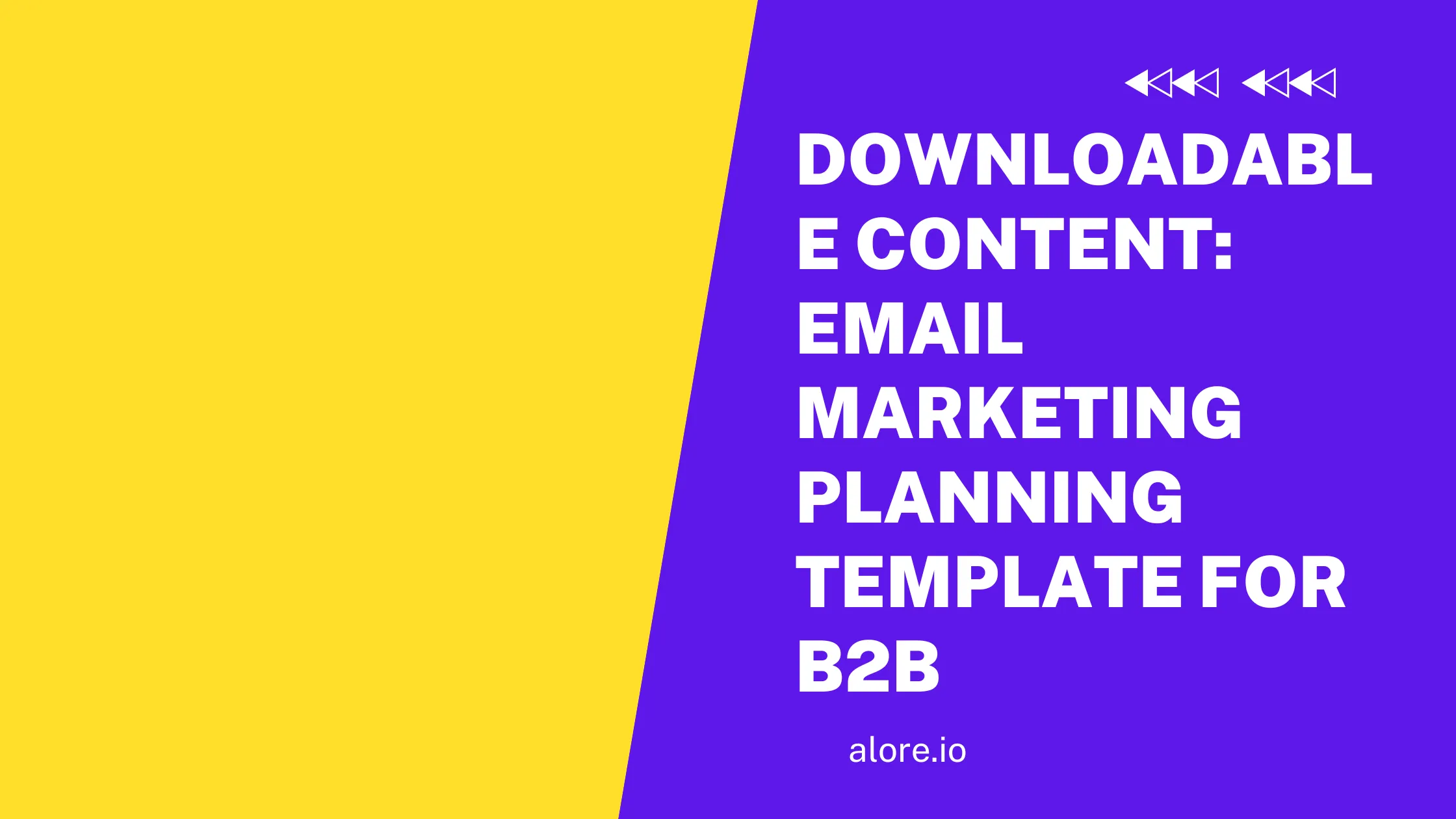
The Role of Planning in B2B Email Marketing
When it comes to executing a successful B2B email marketing strategy, planning isn't just important, it's crucial. An effective plan guides your actions, helps you stay focused, and ensures that every email you send serves a specific purpose in your overall marketing strategy. But planning an email marketing campaign isn't always easy. There are lots of elements to consider, from understanding your audience to crafting the perfect subject line. That's why we've created an easy-to-use B2B email marketing planning template.
Introducing Our B2B Email Marketing Planning Template
Our B2B email marketing planning template is designed to simplify your email planning process. This comprehensive template provides you with a structured approach to organizing your email marketing strategy, ensuring that no important elements are missed.
How to Use the B2B Email Marketing Planning Template
Using our B2B email marketing planning template is as simple as filling in the blanks. The template is divided into several sections, each addressing a different aspect of your email marketing strategy. These sections include Audience Segmentation, Campaign Goals, Email Design, Content, CTA, and Analytics.
By systematically working your way through the template, you can create a solid and detailed plan for your email marketing efforts. It's like having an expert guide by your side, ensuring you consider all crucial factors and take a strategic approach to email marketing.
Download the B2B Email Marketing Planning Template
Are you ready to step up your email marketing game? Click here to download our free B2B email marketing planning template. Trust us; it's going to make your email marketing planning so much easier.
Conclusion
Remember, in the world of B2B email marketing, planning is the key to success. With a solid plan in place, you can ensure that your emails hit the mark, engage your audience, and move you closer to your business goals. Our B2B email marketing planning template is just the tool you need to make this process simpler and more effective. So why wait? Download it today and get started on your path to email marketing success.

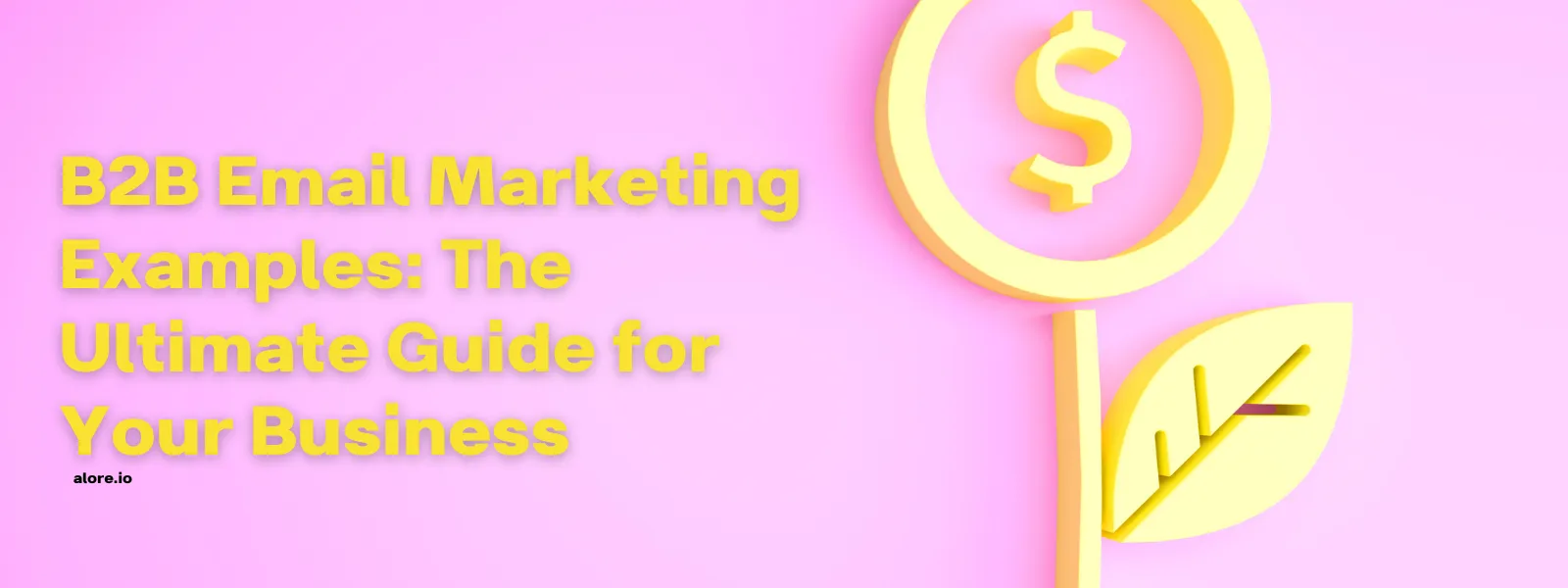



.webp)

